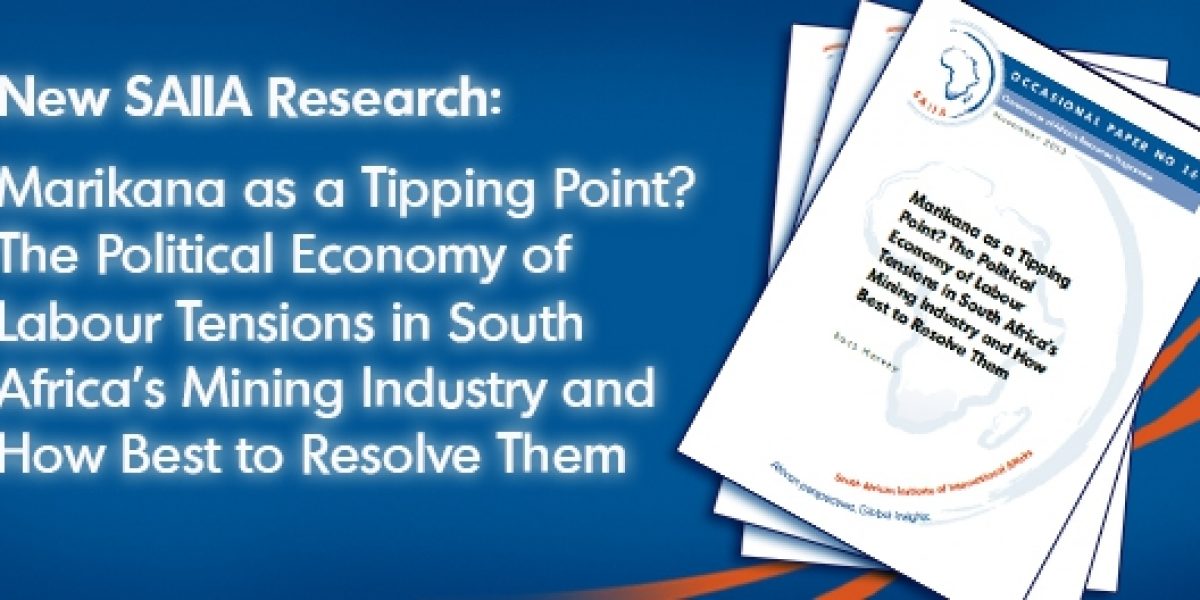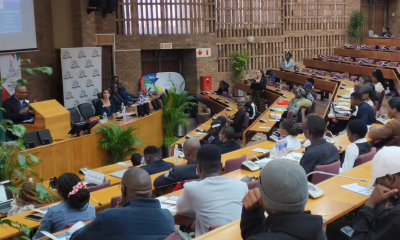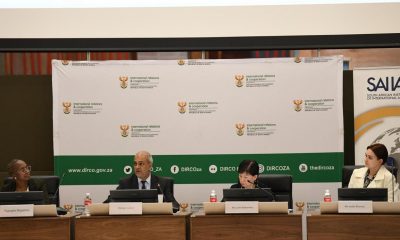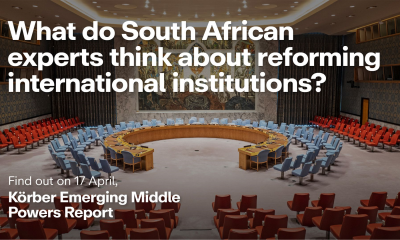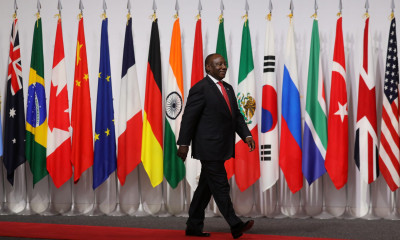To date, the strike has cost the mine R360m in lost revenue and workers R50m in lost basic wages. Northam has revised its offer three times, whereas NUM has failed to budge. This dispute is the latest in a long line of strikes that have devastated the mining industry since early 2012.
SAIIA has produced a new research paper ‘Marikana as a Tipping Point? The Political Economy of Labour Tensions in South Africa’s Mining Industry and How Best to Resolve Them’ by SAIIA Research fellow Ross Harvey. This research paper focusses on labour tensions in South Africa’s mining sector and attempts to explain the incentive structures generated by the institutional setting at the core of extensive and annually repeated strike action. Intense violence erupted on the Platinum Belt in early 2012, eventually culminating in a deadly stand-off between police and striking mineworkers at Lonmin’s Marikana platinum mine on August 16 of the same year. Thirty-four workers were shot in the back and a further 78 injured. Ten people were killed in violence preceding the massacre itself.
Twenty years into a relatively peaceful democratic dispensation, the traumatic event remains difficult to come to terms with or explain. This paper offers one angle.
Watch the related video interview with Ross Harvey: SAIIA Podcast 22: Mining a Year After Marikana
It essentially argues that the institutional arrangements of the Labour Relations Act (LRA) served both the NUM and mining firms well in the absence of competing unions. The Act stipulated that companies were free to establish a minimum threshold membership level that unions had to enjoy before they could enter a bargaining council. This was fine for as long as the NUM remained the monopoly union with a majority on each mine in just about every mineral sector. However, mining companies and the NUM developed a cosy inter-dependence that ultimately led to the abandonment of rank-and-file shaft-level workers such as rock drill operators. Grievance between the NUM aristocracy and shaft workers was easily exploited by rival union, the Association of Mineworkers and Construction Union (AMCU).
The paper employs a game-theoretic framework to show how the institutional arrangements of the law led to deadly rivalry between these two unions, neither of whom are interested in changing the legislation to lower the threshold level for entering bargaining councils, essentially maintaining the de facto closed-shop arrangement that has persisted until now. It would seem rational for the NUM to lobby for these changes given their diminishing membership, but it has opted to oppose the change. The NUM’s affiliation to COSATU, and therefore to the Tripartite Alliance, may give it a sense of confidence that its membership is not in danger of declining further.
AMCU’s presence in the labour relations game creates a prisoners’ dilemma. NUM is fighting to win back lost members and AMCU is fighting to gain new members in addition to the ones already won-over from NUM’s ranks. In order to appear credible to lost or new members respectively, each union has an incentive to demand unreasonable wage hikes from the companies with which they negotiate. Even though they know that the result will be deadlock and lost wages, they are locked into the logic of unrealistic wage demands. By the same token, mining companies’ shareholders are not likely to budge in the context of marginal mines and a global economic downturn.
Labour legislation has to change to alter the incentives for unions to fight each other for majority membership in any given sector. Balloting should also be introduced, where union bosses are required to elicit real preferences from workers before embarking on strike action. At present, they are simply able to exploit financial illiteracy amongst workers to advance political ends. This does not bode well for the sustainability of the industry.
If labour tensions are to be resolved – and the prisoners released from their dilemma – some focal point needs to be attained such as a profit-sharing arrangement between mining firms and unions.
Download the paper: Marikana as a Tipping Point? The Political Economy of Labour Tensions in South Africa’s Mining Industry and How Best to Resolve Them

